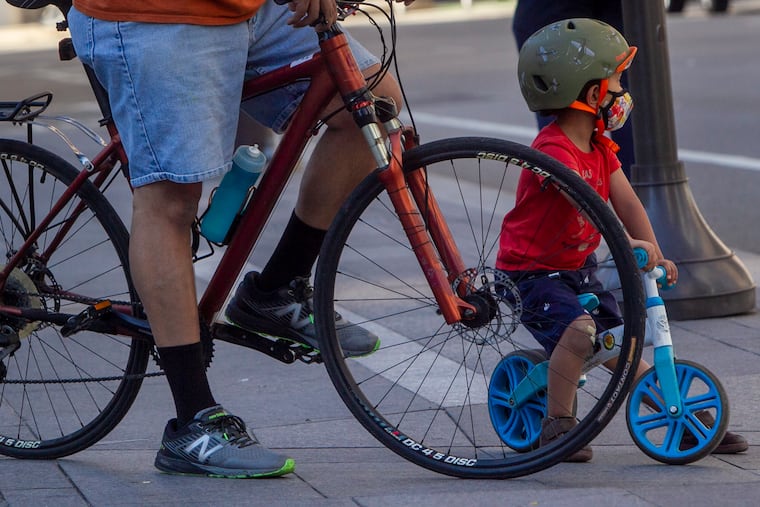A CHOP pediatrician shares how she talks to patients — and her own kids — about pedestrian safety | Expert Opinion
There's more to pedestrian safety than teaching kids to look both ways before crossing the street.

While encouraging children to play outside, it is important that we also teach about pedestrian safety. Many parents recall teaching their kids to look both ways before they cross the street, but there’s much more we can do to keep them safe around motor vehicles.
The American Academy of Pediatrics now warns that despite an overall decline in pedestrian deaths over the past 30 years, child pedestrian deaths have risen 11% since 2013.
While I have always focused on car safety with my patients, I now know that 16% of children killed in traffic accidents are pedestrians, so we need to talk about safety outside cars as much as inside.
When should we start teaching children about pedestrian safety?
We should talk about traffic safety whenever walking around the streets with our children, or even cruising in a stroller. You can start by pointing out different traffic signs — first just as shapes and colors, then as they age, discussing their meaning.
I try to identify driving mistakes and safety behaviors with my children, too, such as, “See how that car didn’t fully stop at the stop sign? Good thing we were waiting on this curb!”
It is never too early to raise their awareness of traffic rules.
What is the most dangerous time of day for pedestrians?
The AAP notes that the hours of 6-9 p.m. are the riskiest for children, with 64% of deaths occurring in daylight hours or at dusk. This is important to note because it is during rush hour when older children may be returning home from after-school sports and activities, and are more likely to be crossing these busy streets without an adult.
How can we make our neighborhood streets safer for kids playing outside?
Take a look around your neighborhood and see if you can identify any risky areas that need improvement, such as unfenced yards, driveways with poor visibility, or obstructed sidewalks. You can report potholes or street damage that comprise street safety to Philly 311.
Remind older children and teens that distracted walking can be dangerous. They should not look at their phone or listen to loud music while crossing a street.
When can I trust my child to walk to or from school alone?
Remember that children may not have the cognitive, perceptual, or behavioral capability to navigate challenging walking routes, despite their chronological age, so the decision about when to let your child walk or bike to school alone is a personal choice.
Consider, too, the disparities in pedestrian deaths: Boys, children with developmental disabilities, and those living in poverty have higher rates of pedestrian deaths.
In general, adults should accompany most children under 10 years of age. Prior to letting your child travel independently, they should practice their route with an adult with active instruction on pedestrian safety.
Katie Lockwood is a pediatrician with the Children’s Hospital of Philadelphia and associate professor of pediatrics at the Perelman School of Medicine at the University of Pennsylvania.